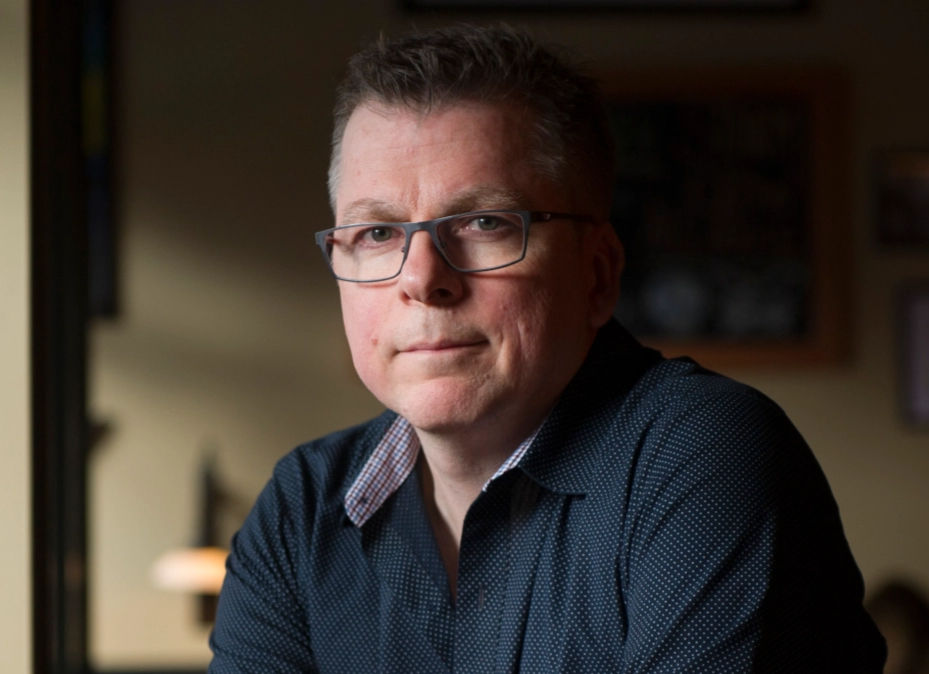C.J. Lavigne on the creative act: finding your voice and fighting the sludge
- Sheelagh Caygill

- Sep 1
- 3 min read
C. J. Lavigne is a Canadian speculative fiction writer. She is also a professional communications scholar who has, additionally, been a freelance editor, English teacher, marketing manager, tech support supervisor, barista, and even—briefly—radio DJ. She holds a Ph.D. in communications studies and a master’s in English literature. Her short fiction has been published in venues including On Spec, Fusion Fragment, Augur Magazine, and PodCastle, and her debut novel, In Veritas (NeWest Press, 2020), was shortlisted for the 2023 Rakuten Kobo Emerging Writer Prize in Speculative Fiction and the 2021 Crawford Award, as well as being named the 2021 Book Publishers Association of Alberta Speculative Fiction Book of the Year. Her novella The Drowned Man’s Daughter is forthcoming from NeWest Press in September 2025.

C. J. grew up in multiple hometowns, but she most often claims Ottawa, Ontario, or Red Deer, Alberta, with a little Nova Scotia thrown in. Wherever she is, she probably has a cat with her, and she’s never terribly far from her next coffee. C.J. Lavigne on the creative act: finding your voice and fighting the sludge, and her thoughts on AI.
C.J. Lavigne on the creative act
OCW: Which authors and/or types of books do you like to read?
CJL: I’ve always enjoyed reading work with elements of fantasy; some of the authors foundational to my own writing were Peter S. Beagle and Robin McKinley—or when I was younger, E. B. White or Beverly Cleary. Right now, the book I’m recommending to everyone is Jordan Kurella’s The Death of Mountains (Lethe Press, 2025); it plays with perspective in really fascinating ways, and it’s an absolutely searing work about both the glory and the grim determination of hope. I’m also looking forward to Premee Mohamed’s The First Thousand Trees (ECW, 2025); it’s out later this year and my hot little hands are waiting.
OCW: Are you a plotter or a pantser?
CJL: I’m a plotter inasmuch as anything longer than a short story gets a rough point-form outline. I normally know the beginning and the ending to anything I write, and the middle is something I have to figure out as I go along. The finished text doesn’t always resemble the original vision that much, and the outline tends to change as needed, but I can use that point-form description for a quick assist when I get stuck (where was I going with this? What should the next scene be? Oh thanks, past me).
Writers! Reject trends and embrace the weird
OCW: What advice/guidence would you give to writers?
CJL: Weird it up! Don’t be chasing trends—by the time you get your work finished, publishers and readers will have moved on. Write the thing only you can write, that you’re afraid no one else will love. It’s your distinct voice that needs to get out there; that’s not just a vague, feel-good platitude. It’s legitimately where you’re most likely to succeed.
Do you see generative AI as a benefit or a threat to writers?
CJL: Oh, hey, I am not a fan of the environmentally ruinous plagiarism machine. Current LLMs were trained on stolen work, without consent or recompense, and now a bunch of tech evangelists are promising to replace writers and other artists by producing poor sludge imitations of human creativity (and facts, and news, and history). These programs are devaluing our very real skills, and they’re burning the planet. I value our air, water, and work; generative AI is for people who want to feel like they “made” something but don’t actually want to put in any effort or thought. No, thank you.
OCW: Do you edit as you write, or write and edit later?
CJL: I am of the “just keep going” school of writing—I’ve worked as a professional editor and I’m confident in revising my own work, but filling up those blank pages is a thousand per cent the worst part for me. So I start with a target daily wordcount and just move forward, move forward, move forward; once I have that first draft on the page, no matter how flawed, the story becomes tangible to me. When I can see the whole shape of it, that’s when I edit.



Comments